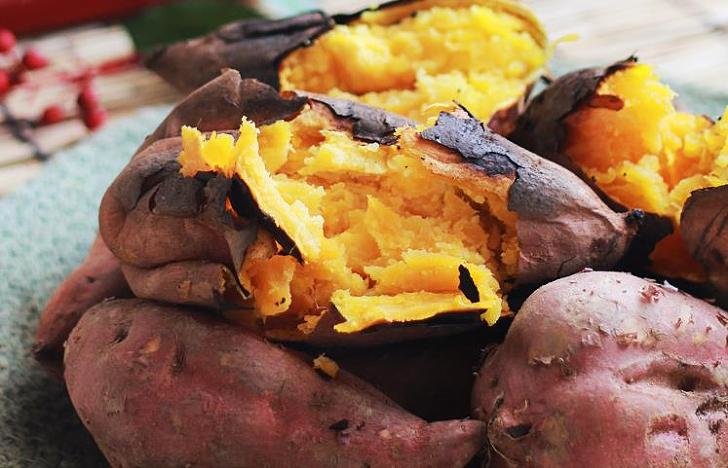Winter in Korea sees a range of fruits, treats, and foods hit the shelves that are not as readily available the rest of the year. Make sure not to miss out on these eight yummy, seasonal snacks!
Sweet Potato (Goguma)
 Photo source: http://cfile3.uf.tistory.com
Photo source: http://cfile3.uf.tistory.com
Variations of sweet potato make popular snacks in Korea all year round, however the root vegetable is most easily available during the winter months. At this time of year, Korean sweet potatoes are baked in foil on an open fire, until the skin is crispy and the potato soft and fluffy underneath. Baked sweet potatoes make a popular office afternoon snack, and are both delicious and highly nutritious.
Winter Kimchi (Dongchimi)
Dongchimi – which literally translates to ‘winter kimchi’ – is a radish and water based dish traditionally prepared in Korea in the weeks before winter, when radishes are in season. Many provinces in Korea have their own variations on dongchimi, which is usually enjoyed as a side dish, and has a strong, vinegary taste. Dongchimi also goes well with baked or steamed sweet potato.
Steamed Buns (Jjinbbang)
The sight of ‘jjinbbang’ – sweet or savory, filled steamed buns – being sold in the winter time brings back childhood memories for many in Korea, as the snack was traditionally only made and sold at this time. Fillings may include meat and vegetables, kimchi, sweet red bean paste and, more recently, pumpkin and chocolate. Try making your own red bean jjinbbang with a recipe here.
Roasted Chestnuts (Gun bam)
The smell of delicious roasted chestnuts pervades the streets of Seoul at this time of year, with stalls of the hot snack outside most major subway stations in the city. A bag of roasted chestnuts, or ‘gun bam,’ will cost you just 2,000 ~ 3,000 KRW , and is the perfect bite to eat while out and about on a cold winter’s eve.
Walnut Sponge Cakes (Hodu-gwaja)
Another unavoidable and delicious smell outside subway stations across the city is the distinct, sweet aroma of walnut sponge cakes, or ‘hodu-gwaja’. Crispy and warm, these bite-size cakes are filled with red bean paste and walnut, and baked in a special press-machine. Beware: hodu-gwaja may be small, but they are very addictive!
Dried Persimmons (Gotgam)
You’ll see packets of ‘gotgam’, or dried persimmons, appear on the shelves of supermarkets and local marts in Korea at the beginning of winter. The persimmons are dried outside in baskets in the crisp fall sunshine, and are ready to enjoy by the time the weather becomes cold. There is even a Dried Persimmon Festival From December 18th to 20th in Yeongdong.
Mandarin Oranges (Gyul)
Also a seasonal fruit, Korean mandarin oranges – or ‘gyul’ – are at their sweetest and cheapest this time of year. Jeju is most famous or producing delicious ‘gyul’, although modern times have seen the fruit grown in many other places in the southern part of the peninsula, too. Take a trip to Garak Market in Songpa-gu and stock up on this healthy and delicious winter snack.
Oysters (Gul)
Plentiful and inexpensive from the end of fall to early spring, now is definitely the time for seafood lovers to get their oyster fix. Fried, steamed, or in a hot bowl of soup – Korean oysters are delicious! Get at your fill of farm-fresh oysters and other seafoods on the Gastro Tour Seoul Tuscany of Korea tour.
